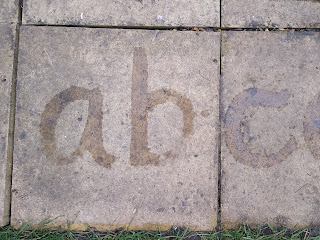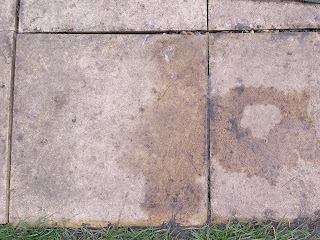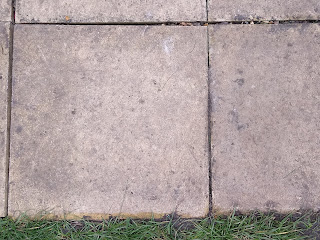This is a really simple activity which is likely useful for many people at the moment for occupying children with very little effort or equipment. There's also some science learning in it, which is why I'm writing about it here!
 |
| The start of the alphabet |
This activity is simply painting with water on concrete or stone or any similar surface. You or your children can paint anything, and I was inspired to do it this week by a memory of seeing a man painting a poem in a park in Chengdu when we visited China in 2014 (which seems an eternity ago now). We did lower case letters of the alphabet as my son is really keen on letters and their sounds at the moment, and he accessorised them with a bit of colouring in! I was hoping he'd want to draw some letters himself as he usually refuses all activities that look like drawing, however sadly this proved to be the same - he was happy to scribble briefly but that was all. He did enjoy reading all the letters though and singing the alphabet song!
 |
| Accessorising the letter b |
We painted some of the slabs on our small patio, using an old paintbrush and a pot of water. Please excuse the state of the patio in the pictures, we were going to improve it this year but we're making the best of what we've got for now given the situation!
The first interesting bit of science was that my son wanted to know why it changed colour - it's because there is less light reflecting back to your eye, so the ground appears darker, even though the water itself looks clear.
 |
| abc (with some extra water!) |
The best bit of this activity, aside from the lack of mess usually associated with painting and small children, is that the painting disappears over time. On a hot, sunny day it disappears in a few minutes. On a dry and windy, but fairly cool day like the weather we had, it takes a little longer. My son wanted to know why it disappears. It's because the liquid water turns into a gas i.e. it evaporates. You can see the liquid water, but you can't see the water molecules when they are a gas in the air.
 |
| Partly evaporated |
He also wanted to know what happens to the water once it's in the air, and we looked at the small number of clouds in the sky and talked about how they are made of water which has become a liquid again (i.e. condensed) because it got cooler. He told me that it'd rain and go to a reservoir and then we could get it out of the tap again - a somewhat simplified version of the water cycle, but he's not far wrong!
 |
| Gone! |
You could just use whatever you draw on as a reusable canvas for pictures or words, but throw in a few questions about the water and what's happening and it turns into an easy science activity too! If you have a child who likes drawing, it could amuse them for ages on a sunny day - my littlest spent a lot of time brushing as he's more into it than his brother (until he emptied the pot of water on himself...) but the big one had fun with the alphabet and reading some simple words, which he's more enthusiastic about than mark making.





Comments
Post a Comment
All comments are moderated before being published.